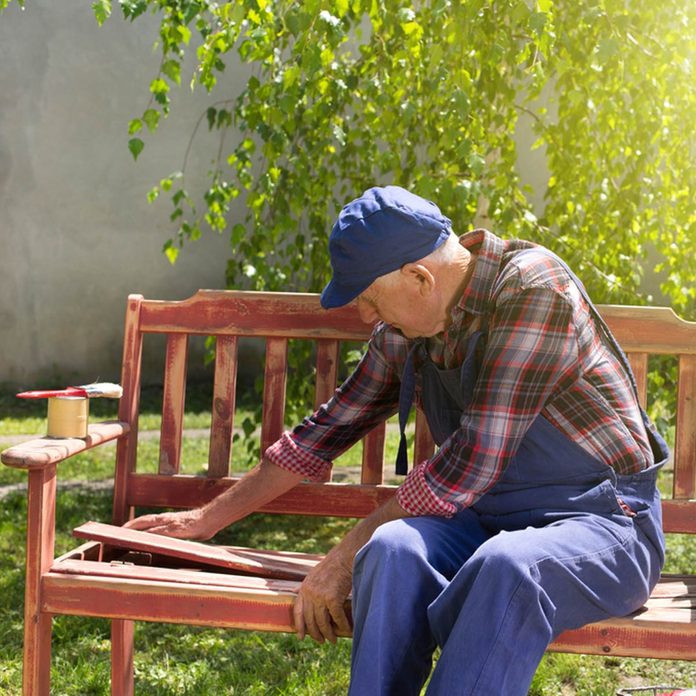
Evaluate Your Furniture
Take a good look at your furniture and decide if painting or staining is even worth it. You can certainly fix a wobbly chair or repair scratches and dents, but if a chair is rotted or the plastic leg of a table is cracked and falling apart, it may be time for new furniture.
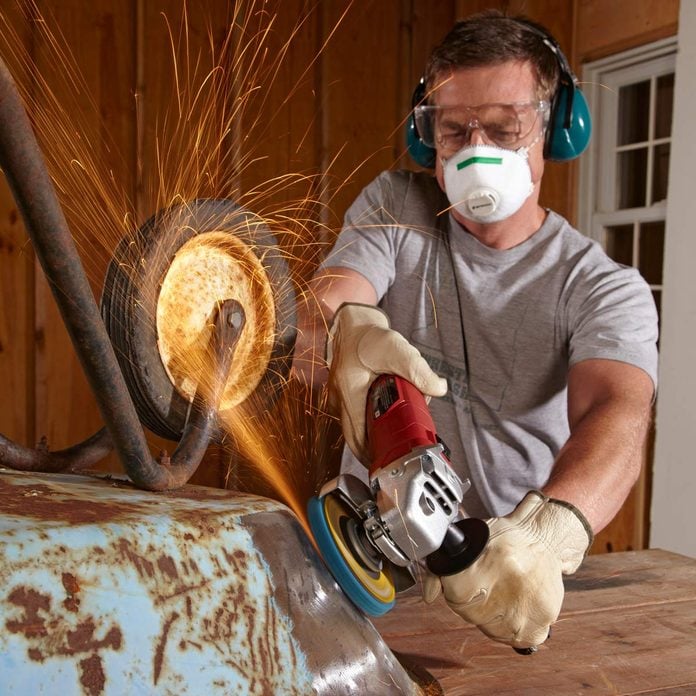
Remove Rust
If your furniture is metal, you can paint over rust.
First, remove all the rust before painting. You can do this without chemicals—you’ll just need to grind, scour and sand off the rust with a tool such as a sander, oscillating tool or drill.
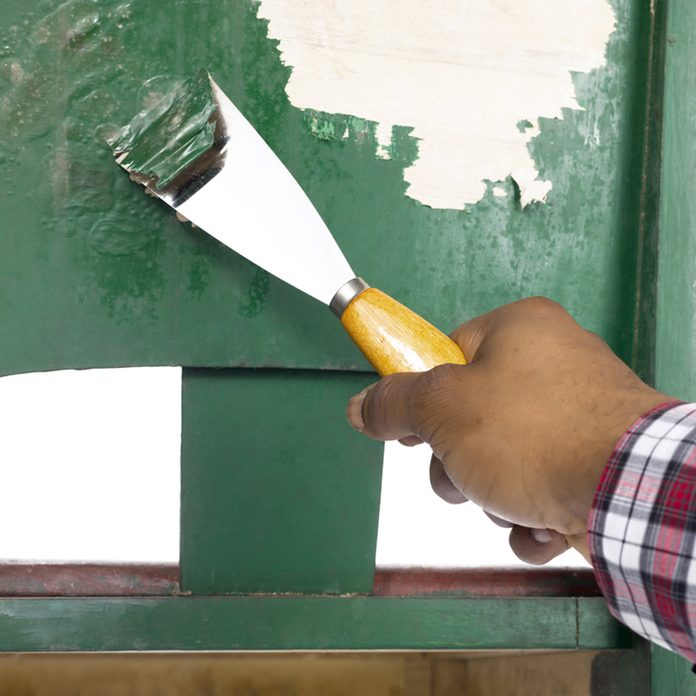
Remove Loose Paint
If you’re painting or staining wood or metal, you’ll need to remove any loose or peeling paint from both the furniture and any hardware before applying on a new coat. Try using sandpaper and a little elbow grease for this job. Here are a few tips for restoring your old furniture.
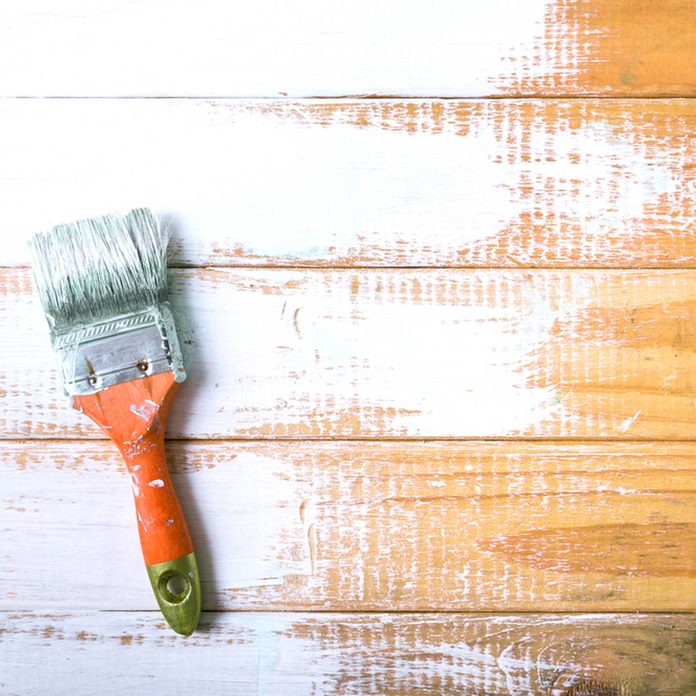
Consider Primer
If you plan to use brush-on paint, consider applying a coat of primer before you apply the color. The coat of primer will serve as a solid base, giving your new paint color something to stick to. Use a high-quality paintbrush or roller for a smooth finish.
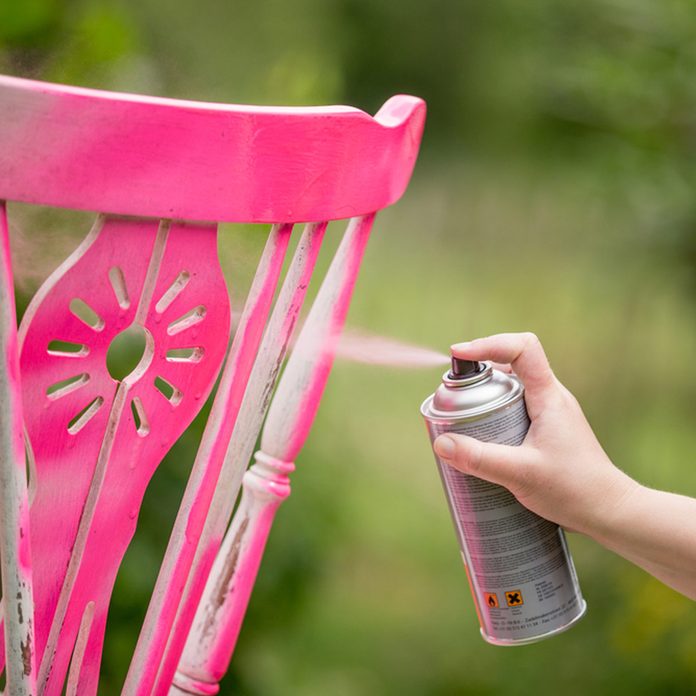
Spray Paint Patio Furniture
If you’re using spray paint for outdoor furniture, you can skip the primer. Conventional spray paints don’t need primer and work best for painting outdoor furniture made of wicker, wood and metal. If you’re looking to paint plastic outdoor furniture, look for a specially formulated spray paint made specifically to work with plastic. Here’s what you should know while spray painting wood.
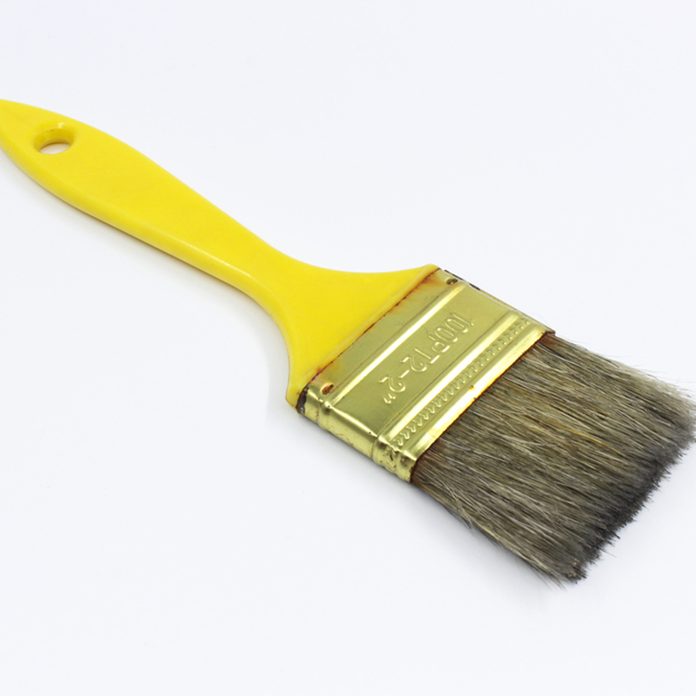
Use the Right Tools
Using the right painting tools for the right project can keep you from some serious headaches. When painting smaller, more intricate pieces of furniture, smaller brushes and rollers are better. A paint roller may be the best choice if you’re painting something and need to cover a large area like a tabletop.
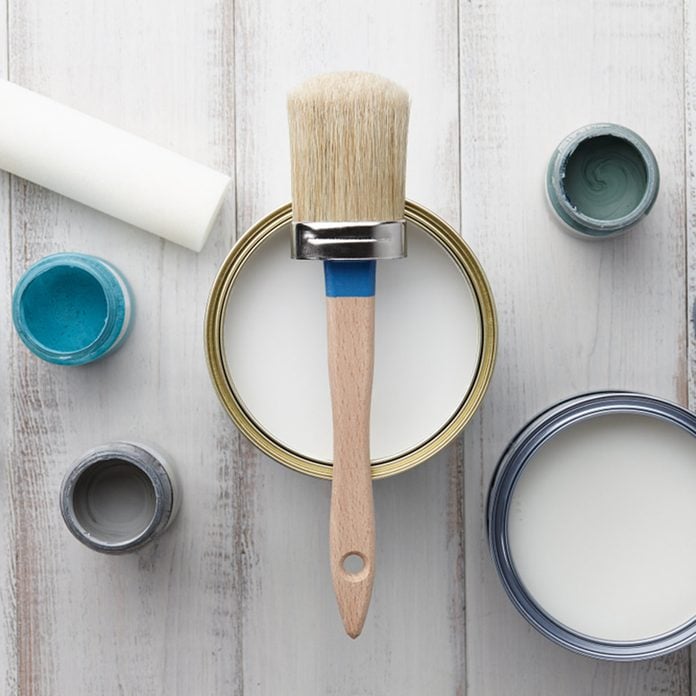
Choose a Finish
If you’re painting wood or metal, it doesn’t really matter which finish you choose—whether it’s gloss, satin or eggshell—as long as your paint is made for outside use. Keep in mind that if you’re painting plastic, you’ll need a paint specifically designed for plastic to ensure it bonds correctly to the surface.
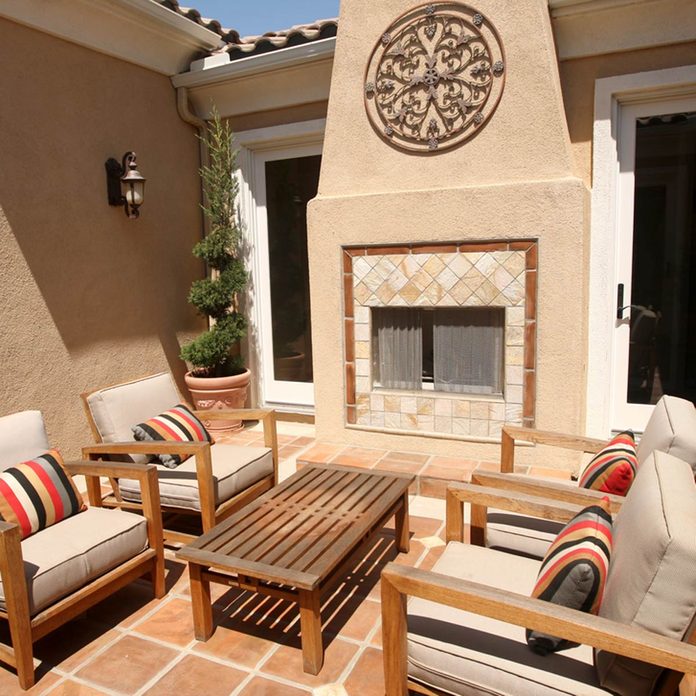
Consider Climate
Depending on where you live, you may need more protection from the elements when painting outdoor furniture. Some paints have ultraviolet protection. If painting metal, consider using paint that is rust inhibiting. Staining is also an option that holds up well to the elements.

How Many Coats?
A common rule of thumb is to apply at least two coats of paint or stain, although be sure to consider any additional instructions on the can. Don’t be tempted to apply thick coats to get the job done faster. Instead, apply thinner coats because they will dry faster and more consistently.

Choose a Color
Your options are virtually endless when it comes to choosing a paint color. One easy way to choose a color is to go with something that compliments your home’s exterior. If you’re unsure about paint color combinations, use the color wheel method: find a color that you like and then pick the corresponding color directly across from it on the wheel.

Multiple Colors are OK
Don’t be scared to choose a few different paint colors. For an eclectic look, mix and match multiple colors.
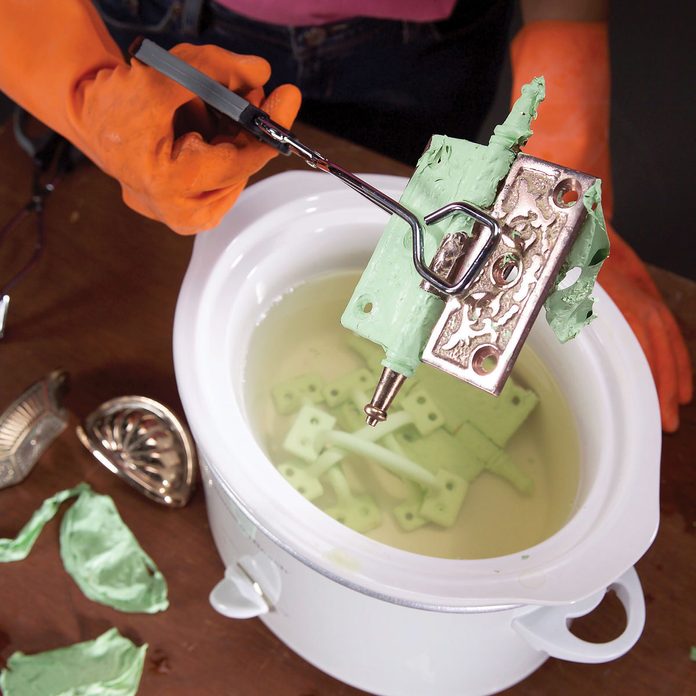
Remove Hardware
Before you get started painting your outdoor furniture, remove the hardware (if possible) from the furniture. If you get paint on the hardware, you can remove paint with a hot water bath.
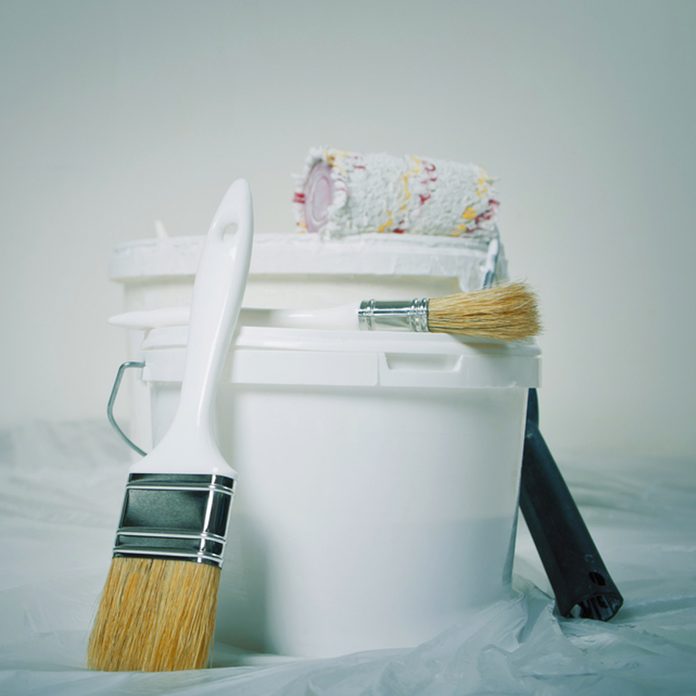
Avoid a Mess
If you want to paint without making a mess, have all your supplies ready to go before you get started. Move any furniture or planters away from the painting area so you don’t get paint on them. Cover the area with drop cloths so you don’t get paint on the patio, deck or garage floor.
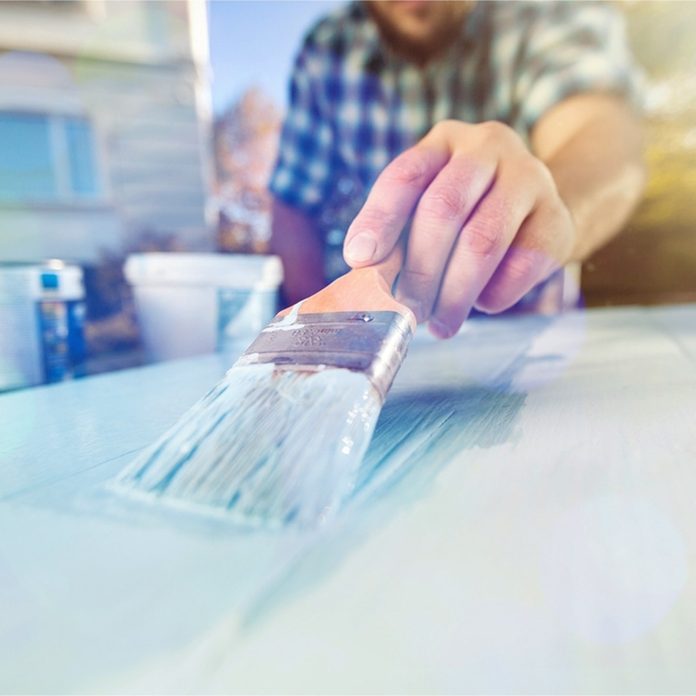
Consider the Weather
If you can, paint in the fall or even during the winter when you’re not using the furniture. Paint may dry too fast in the summer heat. If you have to paint inside, make sure your workspace is well ventilated.
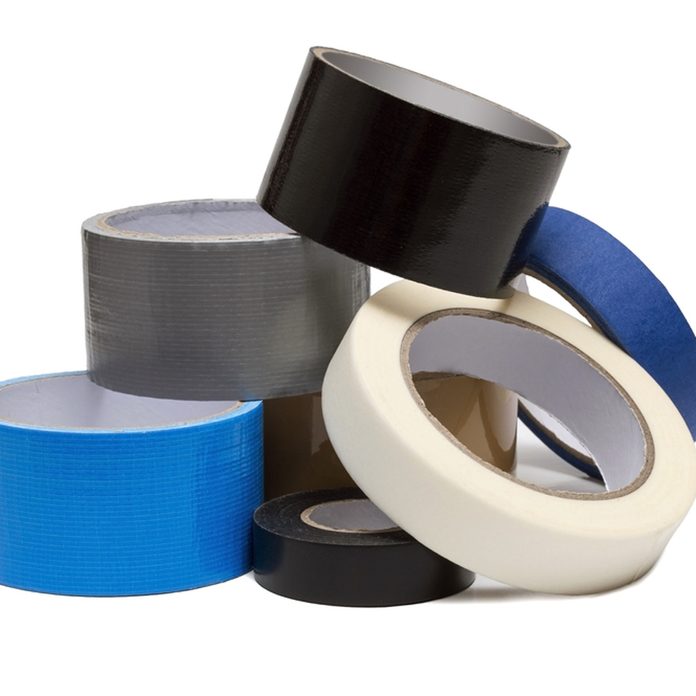
Try Something Different
For a unique look, use painter’s tape or masking tape to create a design on a tabletop. You can easily create striped or checkered patterns without having to do any intricate painting. Choose two or three colors to paint patterns. Here are a few essential tips for painting furniture.
